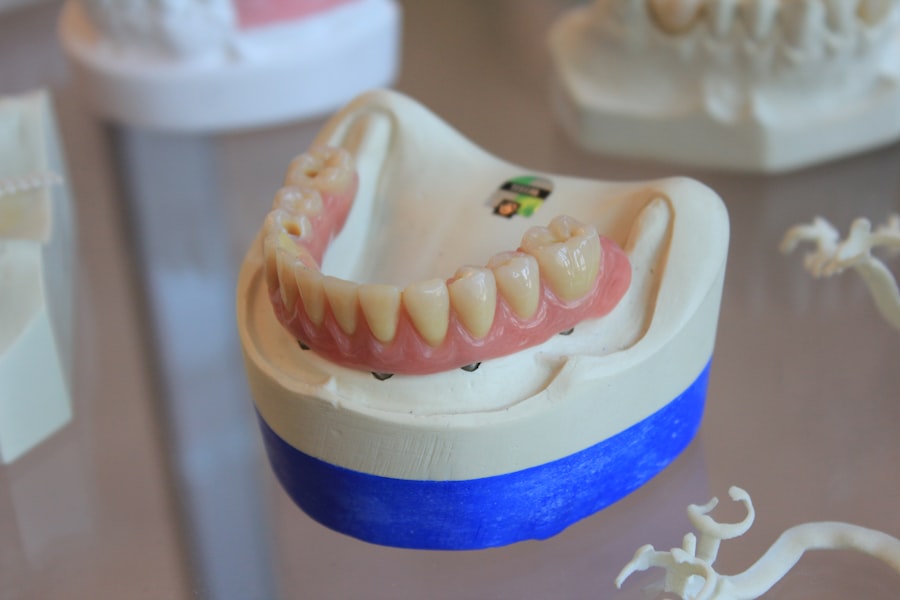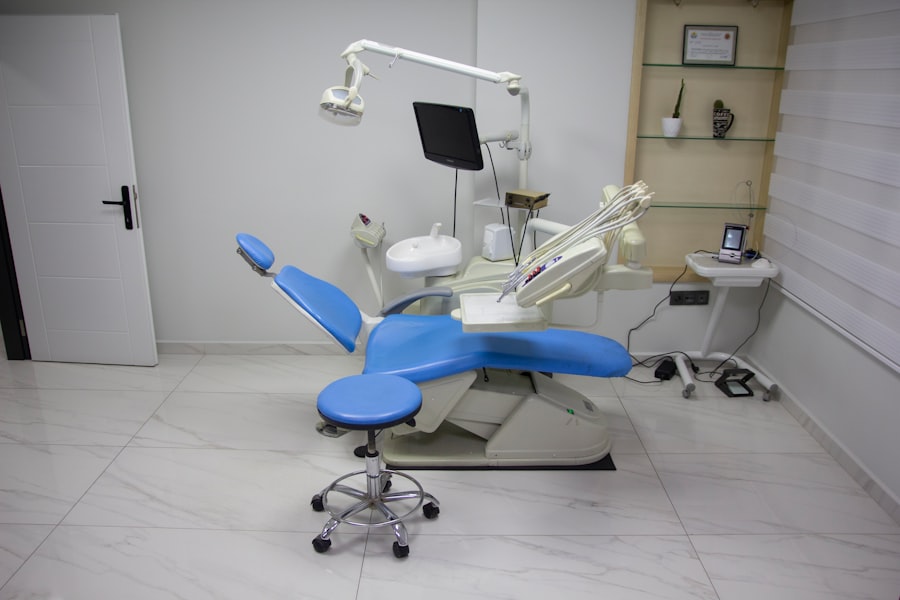Search Engine Optimization (SEO) is a critical component for any business looking to thrive in the digital landscape, and orthodontic practices are no exception. At its core, SEO involves optimizing a website to improve its visibility on search engines like Google. This is particularly important for orthodontists, as potential patients often turn to search engines to find local providers.
Understanding the fundamentals of SEO can help orthodontic practices attract more visitors to their websites, convert those visitors into patients, and ultimately grow their practice. The first step in grasping SEO is recognizing how search engines work. Search engines use complex algorithms to crawl, index, and rank web pages based on various factors, including relevance and authority.
For orthodontic practices, this means that having a well-structured website with high-quality content is essential. Additionally, factors such as page load speed, mobile-friendliness, and user experience play significant roles in determining a website’s ranking. By focusing on these elements, orthodontists can ensure that their websites are not only visible but also appealing to potential patients.
Key Takeaways
- SEO for orthodontic practices starts with understanding key principles tailored to dental services.
- Targeted keywords and phrases specific to orthodontics improve search visibility.
- Creating engaging, informative content helps attract and educate potential patients.
- Local SEO optimization is crucial for attracting nearby clients to orthodontic offices.
- Monitoring SEO performance and using advanced strategies ensures ongoing improvement and competitive advantage.
Identifying Keywords and Phrases for Orthodontic SEO
Keyword research is a foundational aspect of any successful SEO strategy, especially for orthodontic practices. Identifying the right keywords and phrases that potential patients are using to search for orthodontic services is crucial. This process involves understanding the specific terms that individuals might enter into search engines when looking for braces, aligners, or other orthodontic treatments.
Tools like Google Keyword Planner, SEMrush, and Ahrefs can assist in uncovering relevant keywords that have significant search volume and low competition. For instance, an orthodontic practice might discover that terms like “invisible braces,” “orthodontist near me,” or “affordable braces” are frequently searched by users in their area. By incorporating these keywords into their website content, meta descriptions, and headers, practices can enhance their chances of ranking higher in search results.
Additionally, long-tail keywords—more specific phrases that typically have lower search volume but higher intent—can be particularly effective. Phrases such as “best orthodontist for teens in [City]” can attract targeted traffic that is more likely to convert into appointments.
Creating Engaging and Informative Content for Orthodontic Websites

Content is king in the realm of SEO, and this holds true for orthodontic practices as well. Creating engaging and informative content not only helps in attracting visitors but also establishes the practice as an authority in the field. Potential patients are often seeking information about various treatments, procedures, and what to expect during their orthodontic journey.
By providing valuable content that addresses these questions, practices can build trust with their audience. Blog posts, articles, and FAQs are excellent formats for delivering this information. For example, a blog post titled “What to Expect During Your First Orthodontic Appointment” can demystify the process for new patients and encourage them to schedule an appointment.
Additionally, incorporating visuals such as infographics or videos can enhance user engagement and keep visitors on the site longer. This not only improves user experience but also signals to search engines that the content is valuable, potentially boosting rankings.
Optimizing Local SEO for Orthodontic Practices
| Metric | Description | Recommended Value/Goal | Impact on Local SEO |
|---|---|---|---|
| Google My Business (GMB) Profile Completeness | Percentage of profile fields filled out including business hours, services, photos, and contact info | 100% | Higher completeness improves local search rankings and user trust |
| Number of Local Reviews | Total count of customer reviews on GMB and other local directories | 50+ reviews | More reviews increase credibility and improve local ranking signals |
| Average Review Rating | Average star rating from customer reviews | 4.5 stars or higher | Higher ratings attract more clicks and improve ranking |
| Local Keyword Usage | Inclusion of geo-targeted keywords in website content and meta tags | Consistent use of city/neighborhood names | Improves relevance for local search queries |
| NAP Consistency | Consistency of Name, Address, Phone number across all listings | 100% consistent | Prevents confusion and boosts local SEO authority |
| Local Backlinks | Number of backlinks from local websites, directories, and organizations | 20+ quality local backlinks | Enhances domain authority and local relevance |
| Mobile-Friendly Website | Website responsiveness and usability on mobile devices | Fully mobile-optimized | Improves user experience and local search rankings |
| Page Load Speed | Average time for website pages to load | Under 3 seconds | Faster sites rank better and reduce bounce rates |
| Local Schema Markup | Use of structured data to highlight local business info | Implemented on all key pages | Helps search engines understand business details and improves rich results |
| Click-Through Rate (CTR) from Local Search | Percentage of users clicking on the practice’s listing from local search results | Above 10% | Higher CTR indicates relevance and can improve rankings |
Local SEO is particularly vital for orthodontic practices since most patients are searching for services within their geographic area. Optimizing for local search involves several strategies aimed at increasing visibility in local search results. One of the most effective methods is to create and optimize a Google My Business (GMB) listing.
This free tool allows practices to manage their online presence across Google, including search results and maps. A well-optimized GMB listing includes accurate information such as the practice’s name, address, phone number, hours of operation, and services offered. In addition to GMB optimization, local citations—mentions of the practice’s name and address on other websites—play a crucial role in local SEO.
Ensuring consistency across all platforms helps build credibility with search engines. Furthermore, gathering positive reviews from satisfied patients can significantly enhance local rankings. Encouraging patients to leave reviews on Google and other review platforms not only boosts visibility but also influences potential patients’ decisions when choosing an orthodontist.
Leveraging Social Media for Orthodontic SEO
Social media platforms have become indispensable tools for marketing in today’s digital age, and they can also play a significant role in enhancing SEO efforts for orthodontic practices. By maintaining an active presence on platforms like Facebook, Instagram, and Twitter, practices can engage with their audience and drive traffic back to their websites. Sharing informative content, patient testimonials, and before-and-after photos of treatments can create a sense of community and encourage interaction.
Moreover, social media can amplify the reach of content created for the website. When blog posts or articles are shared on social media channels, they have the potential to reach a wider audience, increasing the likelihood of backlinks from other websites. These backlinks are essential for building authority and improving search engine rankings.
Additionally, social media platforms often rank in search results themselves; thus, having a strong social media presence can contribute to overall online visibility.
Building Backlinks and Authority for Orthodontic Websites

Backlinks—links from other websites pointing to your own—are a critical factor in determining a website’s authority and ranking on search engines. For orthodontic practices, building a robust backlink profile can significantly enhance their online presence. One effective strategy is to collaborate with local businesses or health professionals who may be willing to link back to the orthodontist’s website in exchange for mutual promotion or guest blogging opportunities.
Another approach is to create high-quality content that naturally attracts backlinks. For instance, an orthodontic practice could develop an informative guide on “The Benefits of Early Orthodontic Treatment” that could be referenced by parenting blogs or educational websites. Additionally, participating in community events or sponsoring local sports teams can lead to mentions on local news sites or community blogs, further enhancing backlink opportunities.
Monitoring and Analyzing SEO Performance for Orthodontic Practices
To ensure that SEO efforts are yielding positive results, it is essential for orthodontic practices to monitor and analyze their performance regularly. Tools like Google Analytics and Google Search Console provide valuable insights into website traffic, user behavior, and keyword performance. By analyzing this data, practices can identify which strategies are working effectively and which areas may need improvement.
For example, if a particular blog post is driving significant traffic but has a high bounce rate, it may indicate that while users are interested in the topic, they are not finding the information they expected upon arrival. This insight allows practices to refine their content or improve user experience on those pages. Additionally, tracking keyword rankings over time helps practices understand how well they are competing in search results and whether adjustments are needed in their keyword strategy.
Implementing Advanced SEO Strategies for Orthodontic Practices
As orthodontic practices become more comfortable with basic SEO techniques, they may want to explore advanced strategies to further enhance their online presence. One such strategy is implementing schema markup—a form of microdata that helps search engines understand the content of a webpage better. By adding schema markup related to services offered or patient reviews, practices can improve how their listings appear in search results.
Another advanced tactic involves optimizing for voice search—a growing trend as more people use voice-activated devices like smartphones and smart speakers. This requires focusing on natural language keywords and phrases that people might use when speaking rather than typing. For instance, instead of targeting “braces cost,” an orthodontic practice might optimize for “how much do braces cost for kids?” This shift in focus can help capture traffic from voice searches.
Incorporating video content into an SEO strategy is also becoming increasingly important. Videos can enhance engagement on websites and social media platforms while providing valuable information about treatments or patient experiences. Creating a YouTube channel dedicated to orthodontic education can not only drive traffic back to the practice’s website but also improve overall visibility in search results.
By embracing these advanced strategies alongside foundational SEO practices, orthodontic practices can position themselves as leaders in their field while effectively reaching potential patients searching for their services online.


